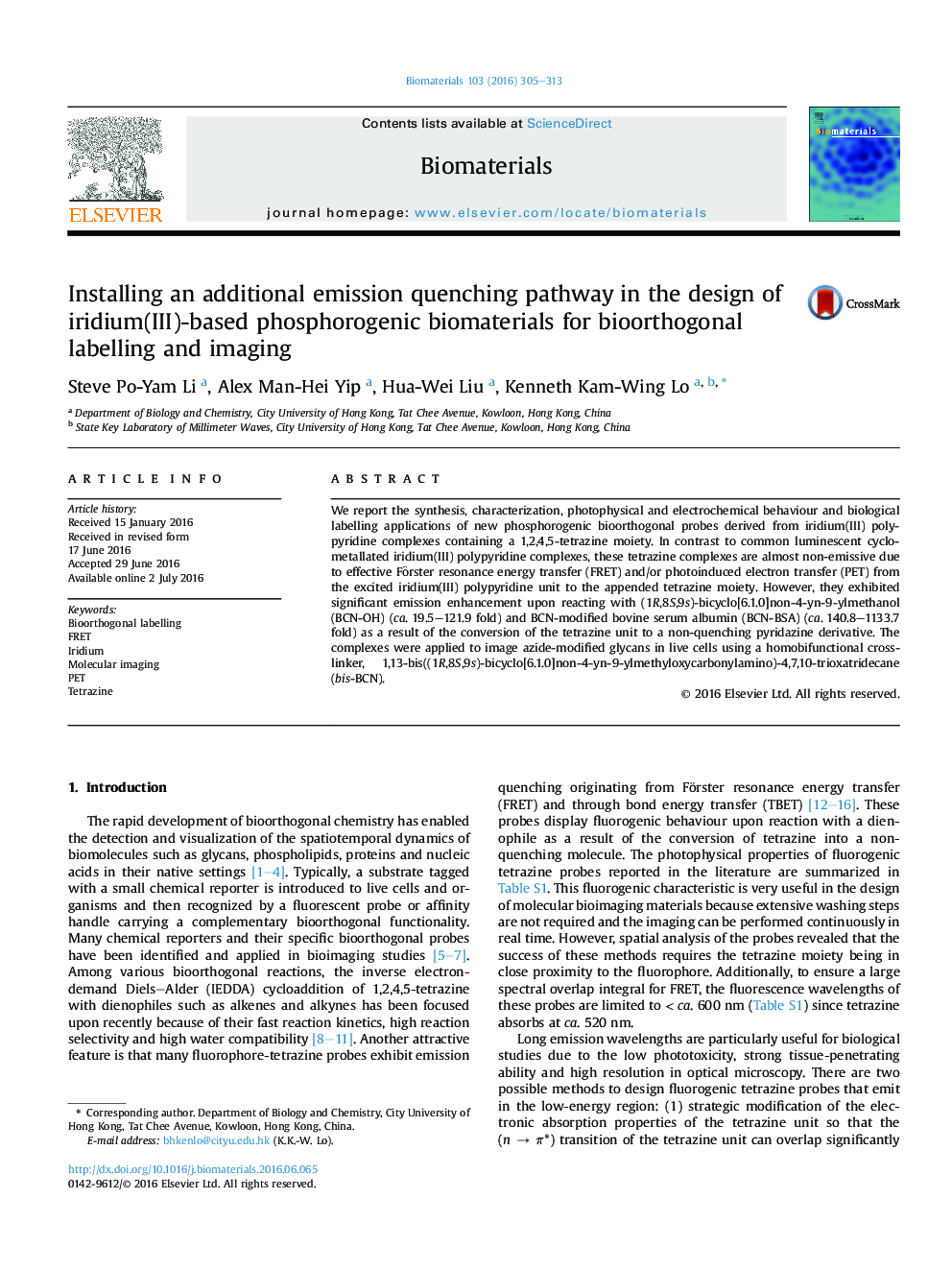| Article ID | Journal | Published Year | Pages | File Type |
|---|---|---|---|---|
| 6484900 | Biomaterials | 2016 | 9 Pages |
Abstract
We report the synthesis, characterization, photophysical and electrochemical behaviour and biological labelling applications of new phosphorogenic bioorthogonal probes derived from iridium(III) polypyridine complexes containing a 1,2,4,5-tetrazine moiety. In contrast to common luminescent cyclometallated iridium(III) polypyridine complexes, these tetrazine complexes are almost non-emissive due to effective Förster resonance energy transfer (FRET) and/or photoinduced electron transfer (PET) from the excited iridium(III) polypyridine unit to the appended tetrazine moiety. However, they exhibited significant emission enhancement upon reacting with (1R,8S,9s)-bicyclo[6.1.0]non-4-yn-9-ylmethanol (BCN-OH) (ca. 19.5-121.9 fold) and BCN-modified bovine serum albumin (BCN-BSA) (ca. 140.8-1133.7 fold) as a result of the conversion of the tetrazine unit to a non-quenching pyridazine derivative. The complexes were applied to image azide-modified glycans in live cells using a homobifunctional crosslinker, 1,13-bis((1R,8S,9s)-bicyclo[6.1.0]non-4-yn-9-ylmethyloxycarbonylamino)-4,7,10-trioxatridecane (bis-BCN).
Related Topics
Physical Sciences and Engineering
Chemical Engineering
Bioengineering
Authors
Steve Po-Yam Li, Alex Man-Hei Yip, Hua-Wei Liu, Kenneth Kam-Wing Lo,
